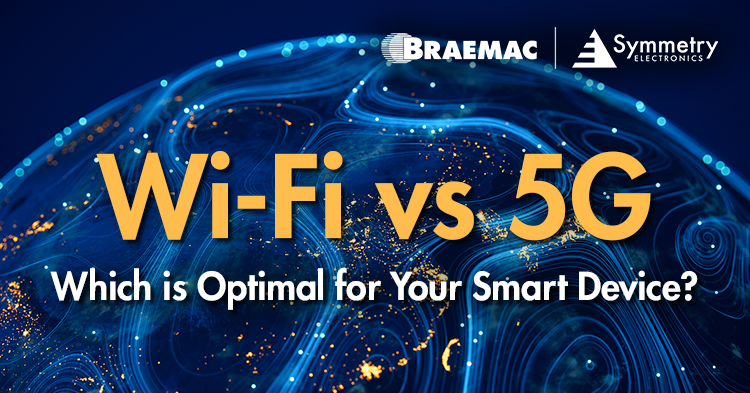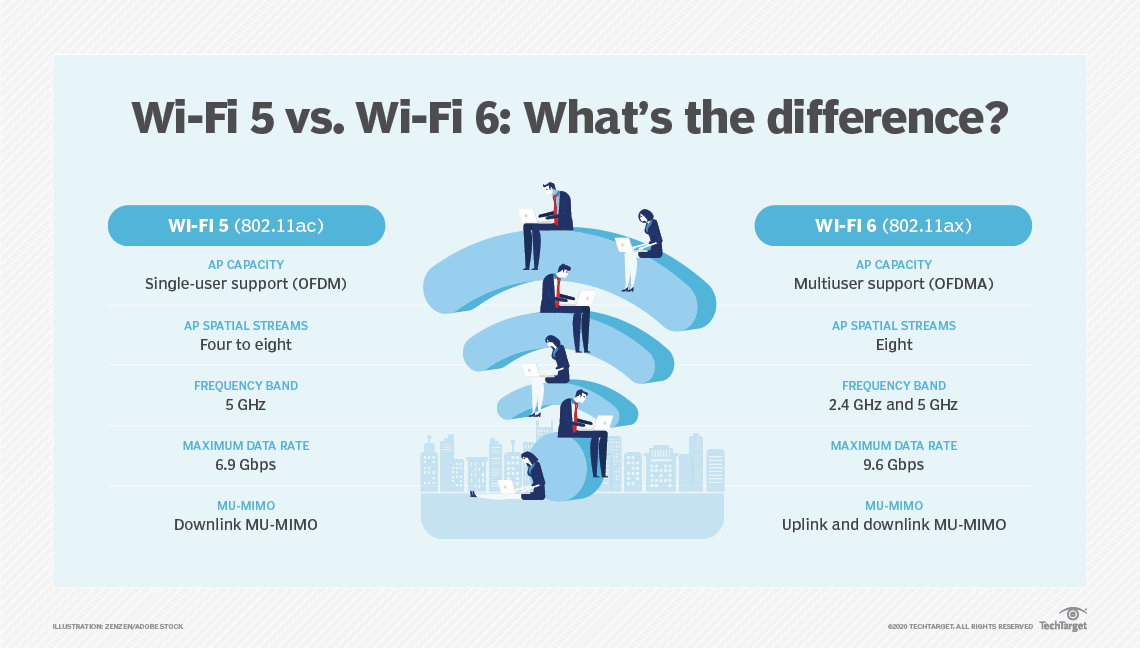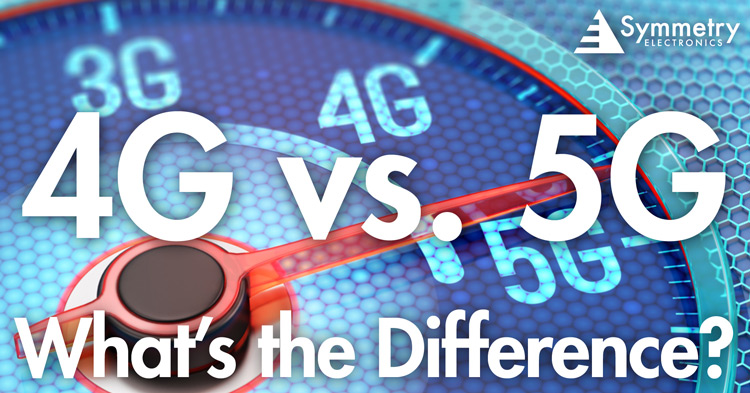- Home
- Braemac Blog
- Wi-Fi vs 5G
Wi-Fi vs 5G
Which is Optimal for Your Smart Device?
About Braemac Americas Team
.png)
In today’s smart devices and IoT ecosystems, connectivity is king. From smart home gadgets to smartphones and wearables, the true power of these technologies lies in their ability to communicate, sync, and share data.
According to IoT Analytics, there were an estimated 18.8 billion connected devices globally in 2024. By 2030, that number of operational IoT devices is expected to reach 40 billion. The surge in connectivity underscores the importance of considering which wireless protocol is ideal for smart device designs. Two of the leading options are Wi-Fi and 5G, each offering distinct advantages. Determining between them isn’t a one-size-fits-all solution, as implementation ultimately comes down to design requirements and intended use cases. Let’s break down the differences, and explore if there’s a possibility for synergy between the two.
Understanding Wi-Fi and 5G
In 2025, most everyone is familiar with the concept of Wi-Fi, but it’s fundamentally a wireless local area network (LAN) technology that enables devices to communicate over short ranges via radio waves in unlicensed spectrum. Modern Wi-Fi networks operate on the 2.4 GHz-5 GHz bands (with Wi-Fi 6 adding 6GHz). A Wi-Fi network uses a router or access point to connect wireless devices to an internet backhaul.
Wi-Fi offers easy, cost-effective wireless coverage over a limited range. It’s a plug-and-play solution ideal for linking IoT devices in smart homes, connecting machines on a factory floor, or providing in-office broadband.

Today’s enterprise Wi-Fi solutions often involve multiple coordinated access points to blanket facilities with coverage. Wi-Fi 6 (802.11ax) is the current mainstream standard. It offers major improvements in speed and capacity over previous generations (Figure 1). In comparison to Wi-Fi 5, Wi-Fi 6 Wi-Fi 6 utilizes improvements in OFDMA and MU-MIMO that let it handle many devices concurrently. This makes Wi-Fi 6 especially well-suited for dense indoor IoT environments, where enterprise-grade access points can even optimize performance in noisy RF conditions.
What is 5G?
5G is the fifth-generation of cellular network standards, building on the wide-area coverage of 4G LTE with massive leaps in speed, latency, and capacity. Unlike Wi-Fi, 5G is delivered by cellular carriers through a network of base stations (cell towers and small cells) that cover large areas. Devices connect to 5G cells over licensed spectrum that carriers reserve.
5G transmits data on a range of frequencies, from low bands of 600-800 MHz that enable expansive transmission to mid bands of a few GHz that offer a balance of range and speed, up to millimeter-wave bands of above 30 GHz that ensure low latency over shorter distances. Leveraging a diverse range of high bands and low bands, 5G can cover both wide areas and deliver ultra-fast data in hotspots.
Promising reliable low-latency communications, 5G connectivity is purpose-built to reduce real-time data transmission to just a few milliseconds or less. Ideal for mission-critical applications, 5G’s massive Machine-Type Communications (mMTC), one of three core service areas of 5G, can support up to 1 million devices per square kilometer and speeds up to 10-20 Gbps.
Private 5G
5G isn’t confined to public carrier networks, either. Private 5G has emerged as an option for enterprises to deploy their own on-site networks. Traditionally, only carriers operated cellular networks, but technologies like 5G NR-Unlicensed and shared spectrum (CBRS in the US) allow organizations to run local 5G cells without owning spectrum. Moreover, DECT NR+ is a non-cellular 5G standard that enables 5G-like connectivity without a traditional carrier. Private 5G networks provide enterprises with cellular benefits like range, reliability, and security in a closed environment that they control.
Speed and Performance
When it comes to raw speed and network performance, both Wi-Fi and 5G deliver impressive metrics. Both surpass the broadband speeds most applications require, but there are differences in real-world use cases.
| Metric | Wi-Fi 6 | 5G |
| Maximum Data Rate | Up to 9.6 Gbps | Up to 20 Gbps |
| Latency | ~1-10 ms | ~1 ms (ideal conditions) |
| Network Security | Wi-Fi Protected Access (WPA3) | Security Anchor Function, Subscription Permanent Identifies |
| Key Applications & Use Cases | - Indoor Coverage -IoT Support -High-Density Wireless Services | -Mobile Backhaul -Autonomous Mobile Vehicle Support -Fixed Wireless Access |
Both Wi-Fi and 5G are designed to handle many devices and high traffic, but they do so differently. Wi-Fi uses a contention-based protocol where each device “takes turns” using the channel, which can lead to collisions or retries in heavy load environments. Even with Wi-Fi 6 improvements, it’s performance can fluctuate if dozens of devices are fighting for use. On the other hand, 5G acts as more of a multi-laned high-way. The network actively coordinates when a device transmits, and can reserve dedicated resources for it. Coordinated scheduling means that as you add more devices or move through a congested area, 5G is better at maintaining consistent throughput and low latency.
Infrastructure Requirements
Another major consideration between Wi-Fi and 5G as a design’s chosen connectivity standard is the infrastructure needed to support either. The cost and complexity of deploying each can be a major factor for developers. Wi-Fi set-ups are cost effective and relatively straihgtforward. For Wi-Fi networks, all that’s needed are wireless access points (APs), routers, and a wired uplink (Ethernet or fiber). Since Wi-Fi operates on unlicensed spectrum, there’s no fee or permission required. Hardware is inexpensive, and even in enterprise Wi-Fi installations that may involve multiple APs for broader coverage, the fundamental components remain simple.
In comparison, 5G infrastructure requirements are much more complex. Not only are systems dependent on towers, but they also rely on core networks that can manage subscriber authentication, routing, and handovers between cells. Carriers have spent billions to accommodate 5G infrastructure, so this typically means working with a mobile operator who has licensed spectrum rights.
Can Wi-Fi and 5G Work Together?
While Wi-Fi’s infrastructure is more cost-effective and less complex, 5G provides the advantage of large-scale deployment. For example, if you’re designing an asset tracker that needs to work anywhere in the country, a 5G (or LTE) modem enables global carrier infrastructure. If you’re designing a smart gadget that consumers utilize at home, then Wi-Fi may be your ideal connectivity standard.
However, there are also instances where developers may choose to use both. There are some applications that use Wi-Fi when available for high throughput but switch to cellular when out of range to ensure continuous connectivity. In fact, many of today’s devices are equipped with both Wi-Fi and cellular radios, like smartphones, tablets, and some IoT gateways. These devices can automatically switch between networks based on signal strength, availability, or cost—using Wi-Fi when available (e.g., at home or the office) and switching to 5G when on the move.
A hybrid approach to Wi-Fi and 5G in IoT environments provide a flexible, resilient, and high-performance connectivity architecture that supports the full spectrum of smart device use cases.
Discover Connectivity Solutions at Braemac Americas
Choosing between Wi-Fi and 5G for your smart device comes down to application, environment, and priorities. Wi-Fi excels for localized, high-throughput connectivity within homes, offices, and factories, with the advantages of low cost and easy deployment. 5G shines when you need wide-area coverage, mobility, or ultra-reliable low-latency links for critical data in the field. In many cases, the optimal design is not purely one or the other, but a hybrid approach that uses both where each makes sense.
At Braemac Americas (rebranded from Symmetry Electronics), we understand the importance of balancing connectivity with your wireless design requirements. Our curated portfolio includes in-stock, available components that are purpose-built for a variety of use cases. Whether you’re building a next-gen IoT device, upgrading an existing product, or deploying a private network, we offer connectivity solutions spanning advanced Wi-Fi modules to cutting-edge cellular IoT modems.
The AP-800AX from Silex Technology is a Wi-Fi 6 compliant industrial access point that excels in high wireless interference (multipath) environments, where stable communication is challenging. The AP-800AX leverages their proprietary tree-type connection mesh network, AMC Mesh, allowing a single AMC Mesh network to support up to 32 units.
Additionally, the AP-800AX makes it possible to operate the DFS band (by simultaneously connecting 2.4/5 GHz bands), which has been difficult to use until now. Ideal applications for the AP-800AX include environments with many obstructions, such as factories and warehouses.
The u-blox NINA-W13 is a stand-alone Wi-Fi module that integrates a powerful MCU and radio for wireless communication. It is equipped with pre-flashed application software, supporting 802.11b/g/n in the 2.4 GHz ISM band. The module includes embedded security features such as secure boot, which allows only authenticated software to run. The NINA-W13 is ideal for critical IoT applications where security is important, such as medical and industrial networking, building automation, and point-of-sale devices.
The nRF9151 from Nordic Semiconductor is a versatile, highly integrated, and compact System-in-Package (SiP) solution. It supports cellular IoT and DECT NR+, a non-cellular 5G standard that does not rely on cellular infrastructure or a mobile operator. Twenty percent smaller than its predecessor, the nRF9151 leverages power LTE, advanced processing, and robust security features. Ideal applications include asset tracking, smart metering, predictive maintenance, and portable medical devices.






